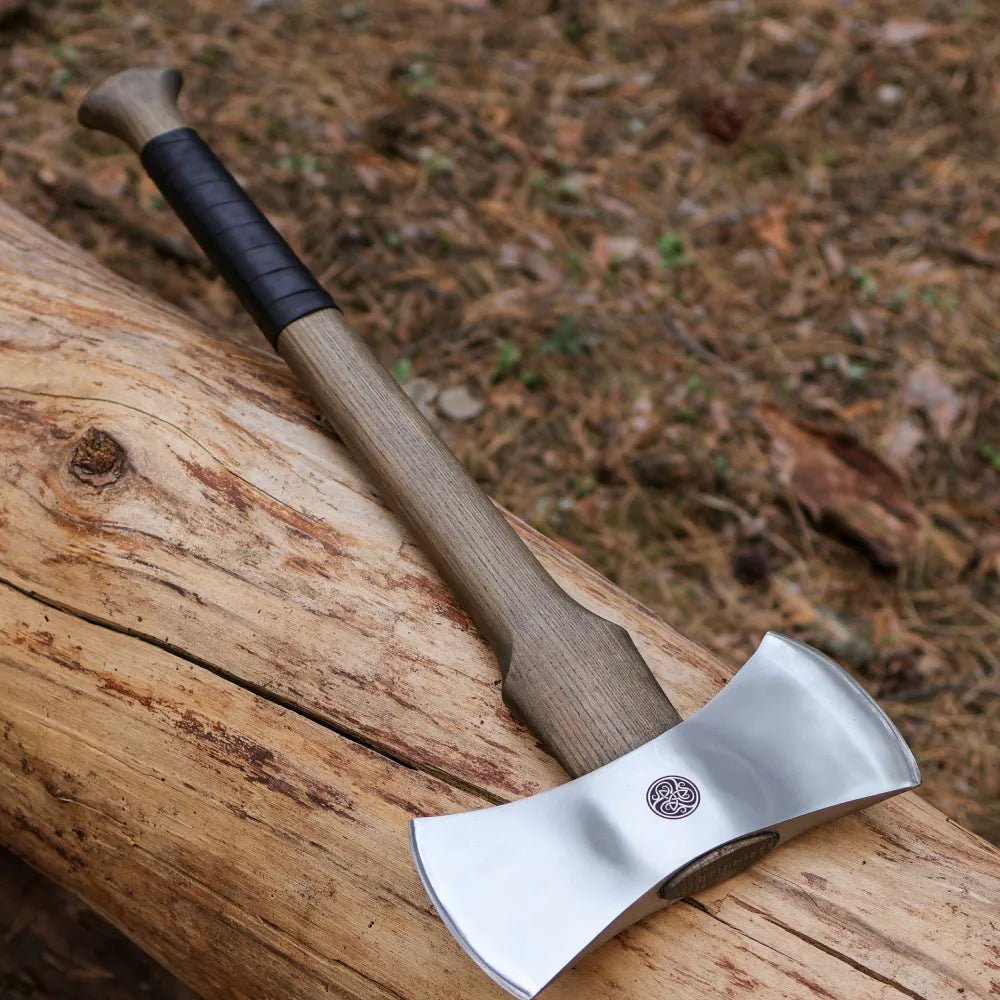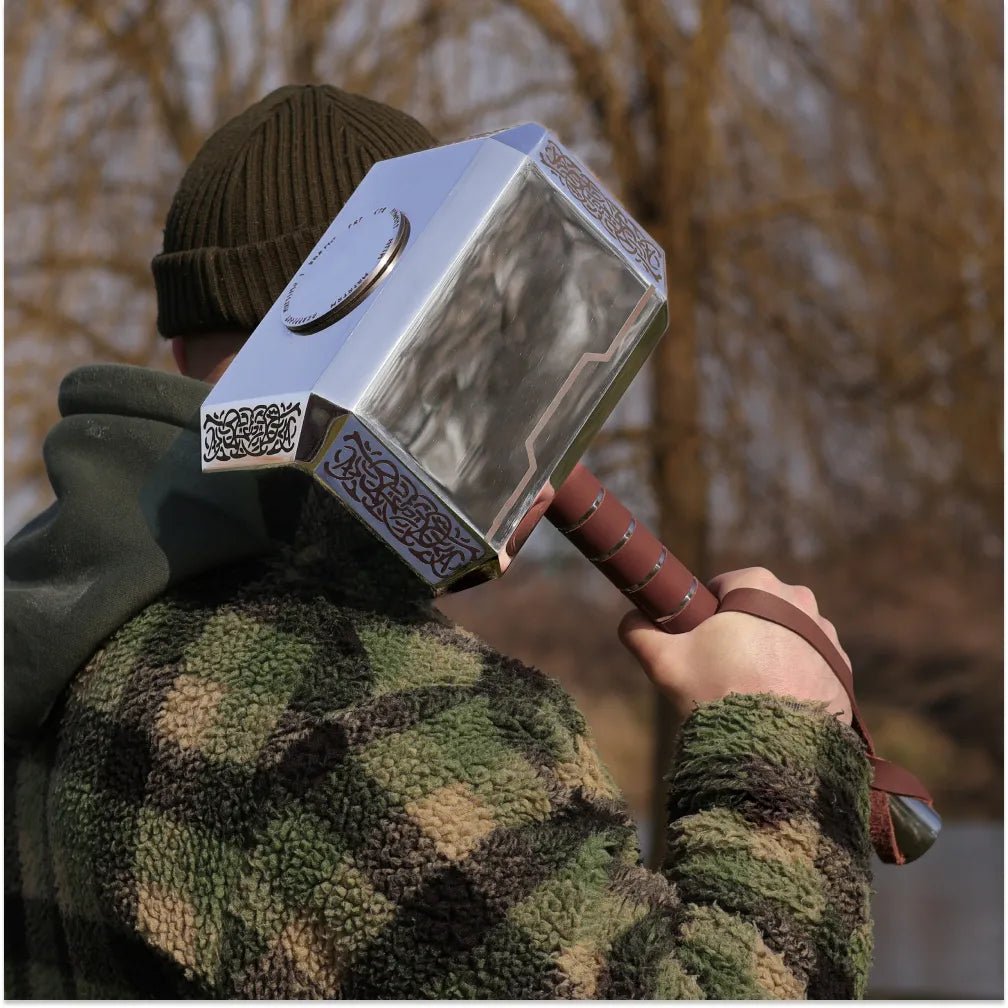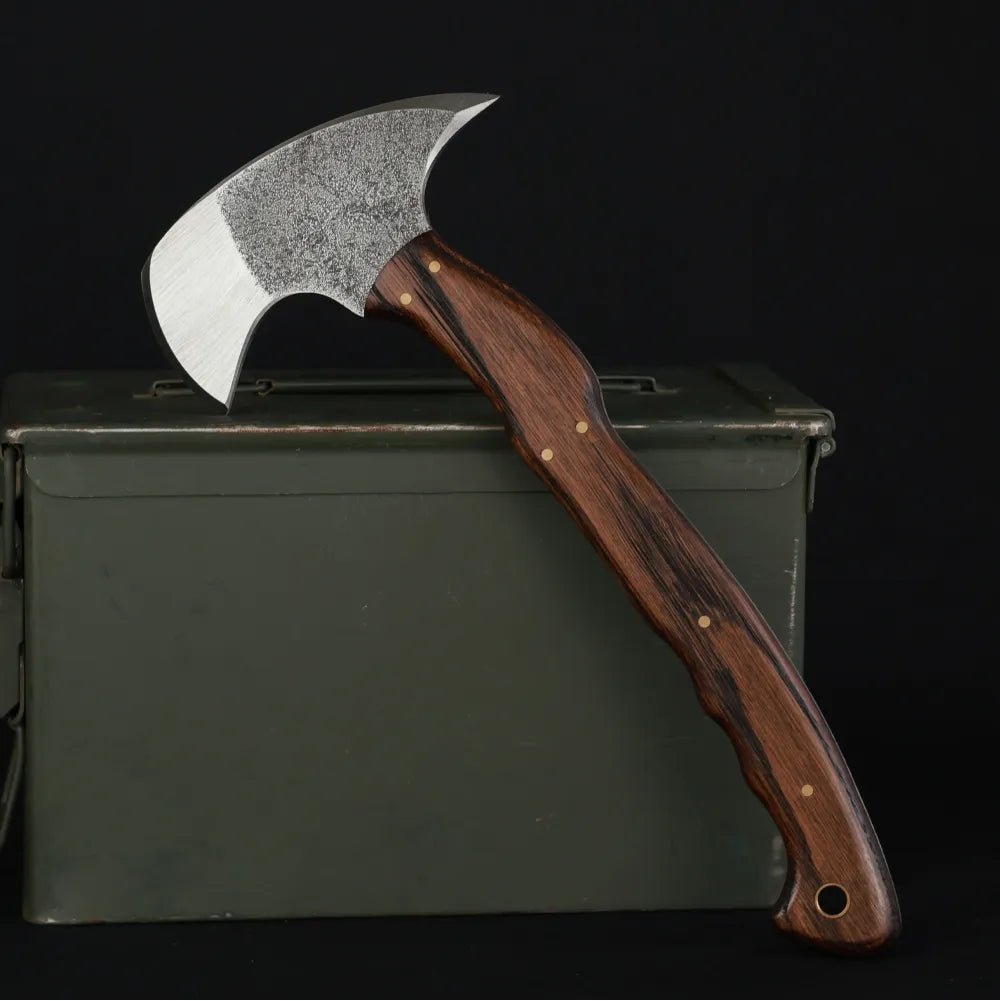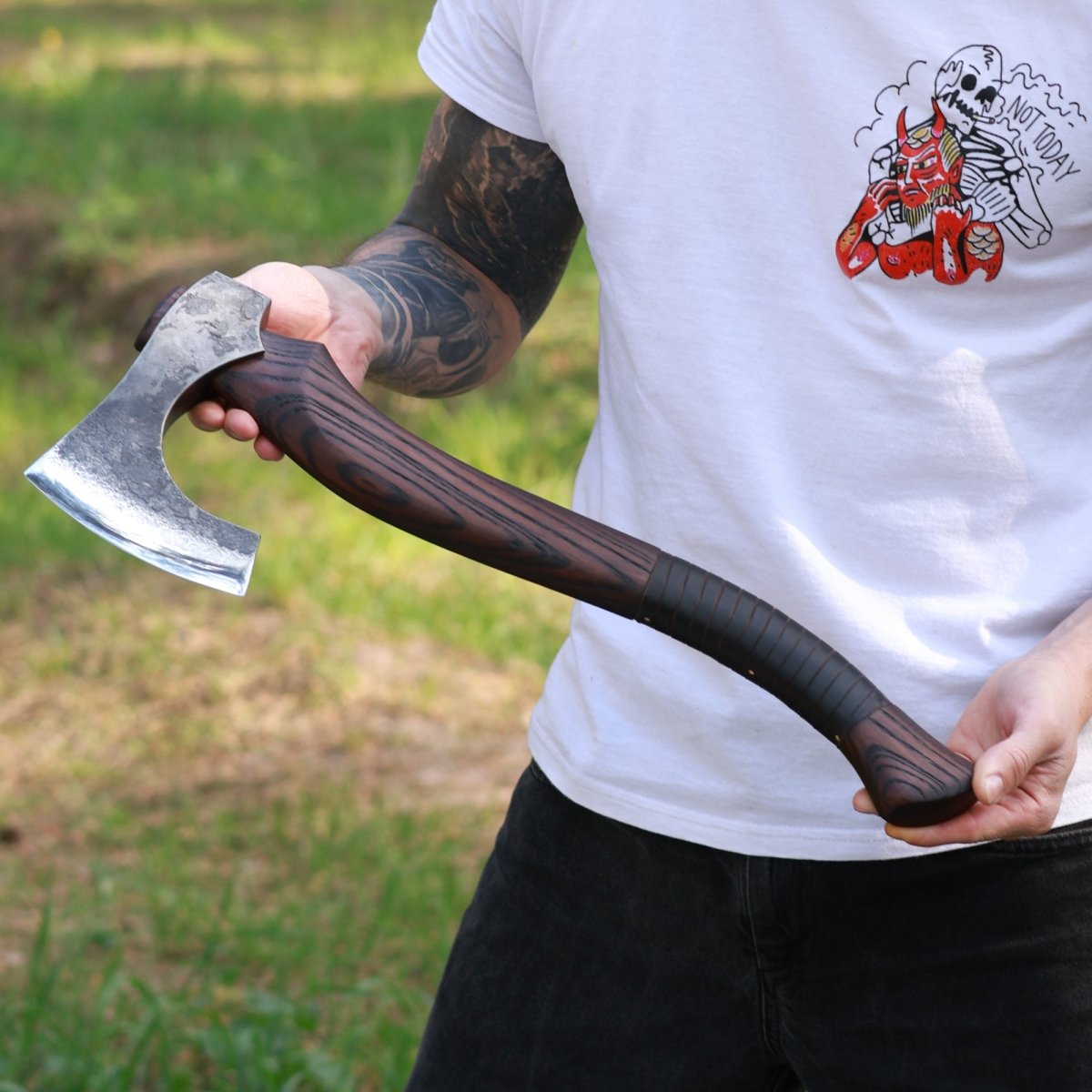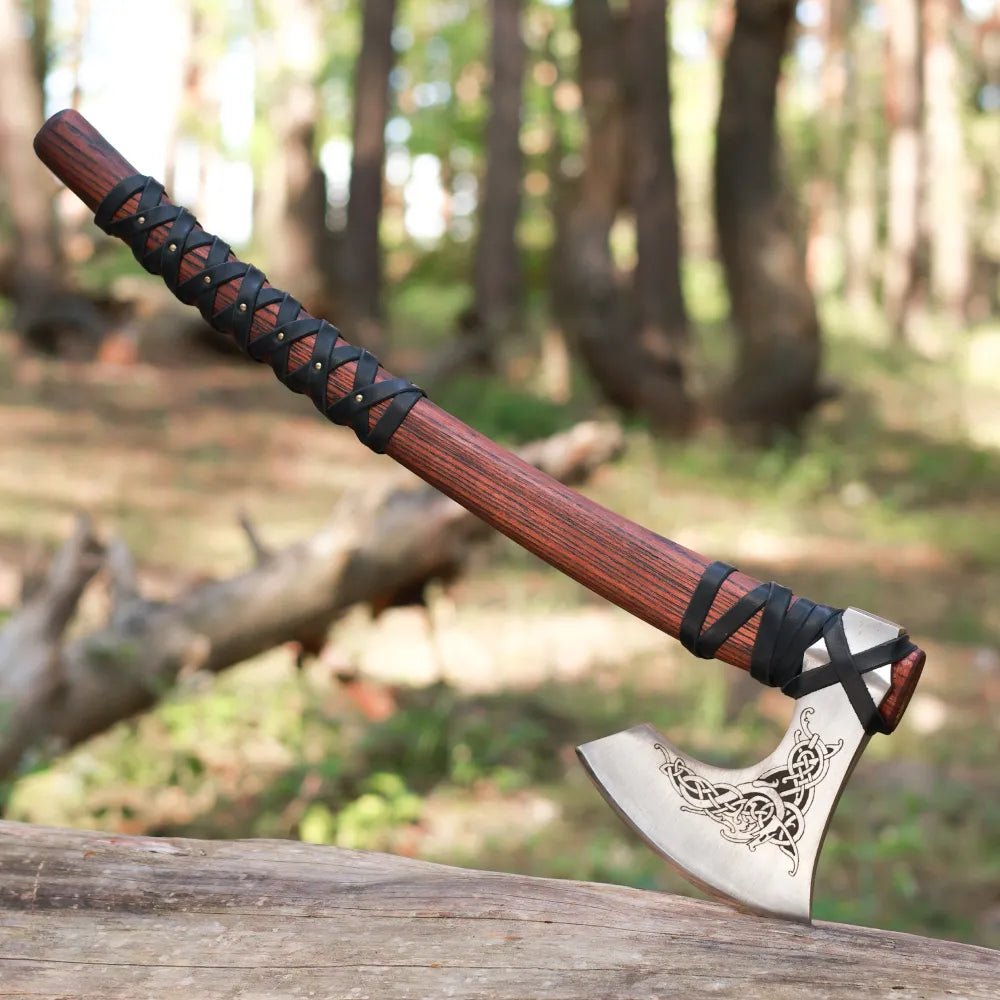Black Friday is here!
The Black Friday Sale has begun at AncientSmithy.com, and the savings are epic! We've dropped the prices on maximum for most of our handmade items! But don't wait too long, axes and hammers at this price can be quickly sold out from our warehouses.
Discover our exclusive collection of Leviathan axes, Thor hammers, tomahawks, and Viking axes. Perfect for mythology enthusiasts or as unforgettable gifts that stand the test of time.
Take this chance to own a handmade legend with the best prices. Quantities are limited, so forge ahead and claim yours before they're history (sold out).
Discounted axes & hammers
Functional axe "Hermod" with engraved head
Sale price
From $82.50
Regular price
$110.00
Functional axe "Idun" with leather sheath
Sale price
From $108.75
Regular price
$145.00
Functional double bit axe "Vargstal"
Sale price
From $84.75
Regular price
$113.00
Hand forged hatchet “Vill Gustus”
Sale price
From $133.50
Regular price
$178.00
Hand forged tomahawk "Tarakon" with tribal engraving
Sale price
From $114.00
Regular price
$152.00
Handcrafted Leviathan axe with leather cover and glow in the dark runes
Sale price
From $621.00
Regular price
$828.00
Handcrafted tomahawk "Takoda" with tribal engraving
Sale price
From $122.25
Regular price
$163.00
Handmade tomahawk "Simargl" with Slavic engraving
Sale price
From $111.00
Regular price
$148.00
Product
Sale price$49.99
Product
Sale price$49.99
Product
Sale price$49.99
Product
Sale price$49.99
Product
Sale price$49.99
Product
Sale price$49.99
Product
Sale price$49.99
Product
Sale price$49.99
Viking unique hammer "Goibniu"
Sale price
From $113.60
Regular price
$142.00
Compact tactical tomahawk with polymer composite handle
Sale price
From $121.60
Regular price
$152.00
Viking Double-Edged Axe "Havamal"
Sale price
From $252.00
Regular price
$315.00
Unique hand forged Mjolnir hammer(Thor's Hammer)
Sale price
From $427.20
Regular price
$534.00
Tactical tomahawk "Egill"
Sale price
From $127.20
Regular price
$159.00
Hand forged Viking axe "Svart barbar" with carved handle
Sale price
From $137.60
Regular price
$172.00
Compact tactical tomahawk with blade and polymer composite handle
Sale price
From $121.60
Regular price
$152.00
Leviathan Kratos axe with carved handle 35.8"
Sale price
From $390.40
Regular price
$488.00
Axe Eye Drift 4.41 lbs - Blacksmithing Tool for Artisan
Sale price
$74.80
Regular price
$88.00
Hand forged axe “OTHALA” with leather cover
Sale price
From $171.70
Regular price
$202.00
Hand forged tomahawk "Nanook"
Sale price
From $141.95
Regular price
$167.00
Hand-forged Leviathan axe with leather wrap
Sale price
From $340.00
Regular price
$400.00
Real Leviathan axe with Glow-in-the-Dar Runes
Sale price
From $332.35
Regular price
$391.00
Tactical Tomahawk Axe "Garmr"
Sale price
From $118.15
Regular price
$139.00
Tactical tomahawk with blade and spike 13.77" - polymer composite handle
Sale price
From $135.15
Regular price
$159.00
Hand-forged Leviathan axe with leather wrap "Ragnarok Kratos axe"
Sale price
From $365.40
Regular price
$406.00
Viking axe handmade Ulfhednar Warriors
Sale price
From $208.80
Regular price
$232.00
Viking long axe "Ragnar Lodbrok" with carving handle and leather wrap
Sale price
From $338.40
Regular price
$376.00
Handmade Norse axe ''Njord" with gently leather wrap
Sale price
From $130.50
Regular price
$145.00







